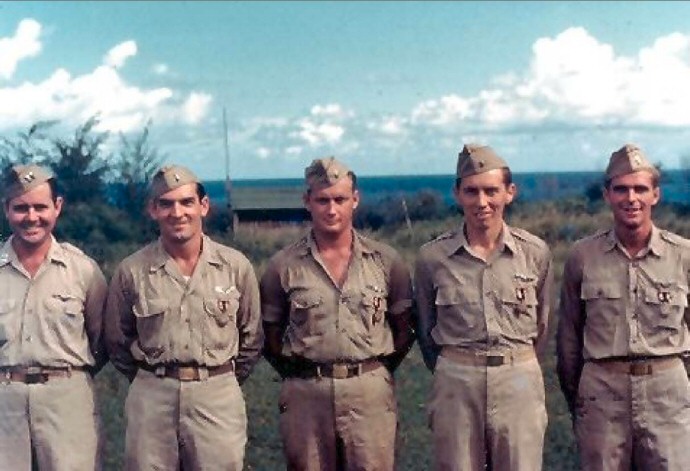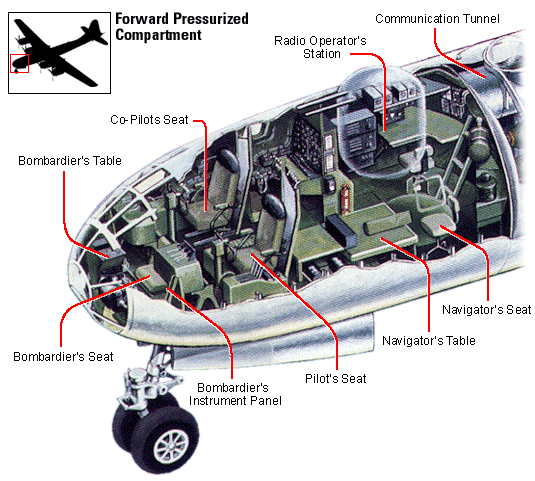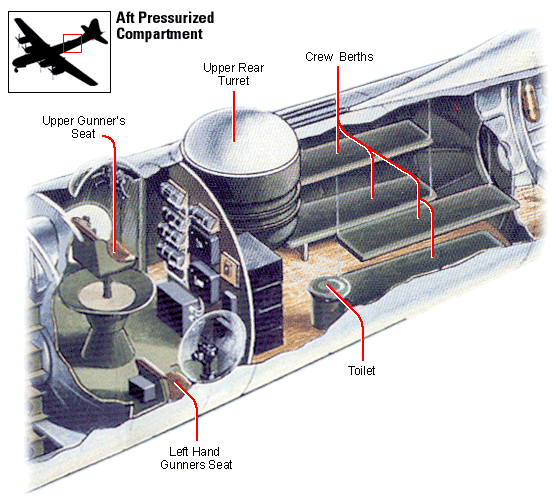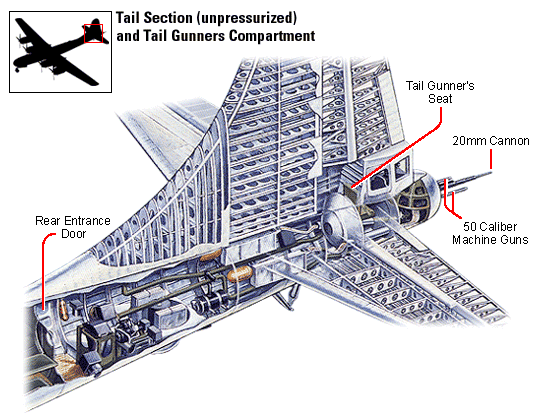

The air crew of a B-29 generally included eleven people. Each occupation had a different MOS ("military operating specialty") and required special training. The Airplane Commander, Pilot, Navigator and Bombardier were generally officers. The Flight Engineer, Radio Operator, and the Gunners were generally enlisted men. The Radarman was initially an enlisted man but was later an officer. The following is a list of the crew members, with the MOS indicated in square brackets:
|
|
|---|---|
|
Many of the crewmembers were performing tasks that were brand-new, including the flight engineer, the radarman and the CFC gunner. For a 1944 training film is at ____. |
|
 |
|---|
|
This picture shows standard uniforms for a typical B-29 crew in the Pacific. This how many crewmembers dressed when flying missions (without the medals, of course). They did not typically wear flight jackets or fleece-lined boots that the bomber crews in Europe wore. In some cases, the men wore flight suits. While on a mission, they also generally wore yellow life preservers. |
|
Each air crewman wore a badge to indicate his specialty. The badge for the air crew had wings. For example, the badge for the flight engineer was the same as the badge for the engineer, with the addition of a set of wings. |
|---|
The first crews tended to remain together until they had completed all of their missions. When a crewmember became sick, HQ would try to find a volunteer from a crew that was not flying. When a crewmember was sent home, HQ had to find a permanent replacement. The replacement crews was more likely to be broken up to fill in gaps in the original crews. Under standard policy, a replacement crew would fly with an experienced commander for the first 5 missions. Conversely, their commander would fly with the experienced crew for 5 missions (possibly as pilot). Initially, crews had to fly 25 missions to go home. However, this was eventually raised to 35 missions. |
|---|
The B-29 was divided into three pressurized compartments: the Forward Pressurized Compartment, the Aft Pressurized Compartment and the Tail Gunner's Compartment. The first two Compartments were connected by a tunnel. The tail gunner generally remained in his compartment for the duration of the mission. |
|---|
Six crew members were located in the Forward Pressurized Compartment, including the Airplane Commander, the Pilot, the Flight Engineer, the Navigator, the Bombardier and the Radio Operator. The tunnel at the rear of the Compartment provided access to the Aft Pressurized Compartment. |
|---|
 Picture from "Flygirls" at PBS |
Four crew members were located in the Aft Pressurized Compartment, including the CFC gunner, the left and right gunners and the radar operator. The CFC gunner sat on an elevated seat (the "barber chair") near the gun-sighting astrodome. The left and rear gunner were located at side blisters. The radarman and the radar equipment were in the area where the bunk beds are located. The tunnel at the front of this section provided access to the Forward Pressurized Compartment. |
|---|
 Picture from "Flygirls" at PBS |
The tail gunner sat in a separate pressurized compartment in the rear of the aircraft. |
|---|
 Picture from "Flygirls" at PBS |
Prior to their first combat mission, crews spent years in training. |
|---|